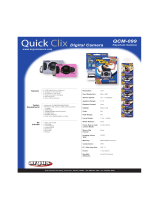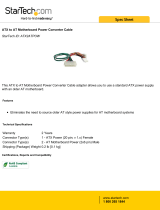
2
Chapter 1: Product introduction
1.2
Core Specifications
The A7N266-VM motherboard is designed and assembled according to the
highest standards. This ASUS motherboard represents the latest advances
and offers users the finest componentry available today...
AMD
®
Athlon
™
/ Athlon
™
XP and Duron
™
Socket A (462) Processor
North Bridge Chipset: the nVidia
®
220D GeForce MX Integrated GPU/
North Bridge controller chipset. The controller supports a 64bit DDR
memory controller and up to 1 GB of 266/200MHz DDR SDRAM memory.
The 64bit memory controller provides a exceptional 2.1 GB/second system
memory bandwidth.
South Bridge Chipset: Features the brand new nVidia
®
nForce
™
MCP-D integrated peripheral South Bridge controller operates at 800MB/
sec to communicate with the North Bridge for maximum bandwith required
for PCI, USB and support for Fast Ethernet devices. The chipset has an
integrated APU (Audio Processing Unit) for Dolby
™
digital encoding. The
controller supports standard UltraDMA/100/66/33 for burst mode data
transfer rates of up to 100MB/sec. Separate data paths for each IDE
channel are built-in for up to four IDE devices. The controller supports
six USB ports and is PCI rev 2.2 compliant. The MCP supplies an LPC
1.0 interface along with AT legacy functions, a clock synthesizer and meets
ACPI 1.0 and PCI Power Management 1.1 specifications.
PC2100 / PC1600 DDR Support: Equipped with two Double Data Rate Dual
Inline Memory Module (DDR DIMM) sockets to support up to 1GB of DDR
DRAM, the newest memory standard with the highest bandwidth and
lowest latency currently available. This new memory technology increases
performance by executing two actions per clock cycle, resulting in data
transfer rates of up to 2.1 GB/s for 133MHz DDR SDRAM and 1.6GB/s
for 100MHz DDR SDRAM.
UltraDMA/100 Support: Comes with an onboard PCI Bus Master IDE
controller with two connectors that support four IDE devices on two
channels. Supports UltraDMA100/66/33, PIO Modes 3 & 4, Bus Master
IDE DMA Mode 2, and Enhanced IDE devices, such as DVD-ROM, CD-
ROM, CD-R/RW, LS-120, and Tape Backup drives.
Multi-I/O Chipset: Offers complete support for a variety of I/O functions.
Provides two high-speed UART compatible serial ports and one parallel
port with EPP and ECP capabilities. UART2 can also be directed from
COM2 to the Infrared Module for wireless connections. The Super I/O
controller supports a floppy disk drive, PS/2 keyboard, and PS/2 mouse.
Connections: Parallel Port, PS/2 mouse Port, PS/2 keyboard, 2 USB ports,
Microphone, Line In Jack, Line Out Jack, Standard ATX power.





















